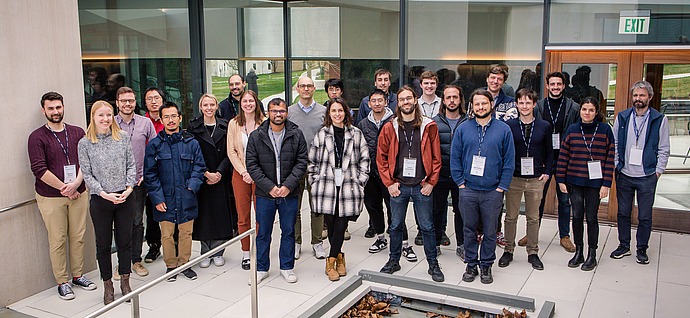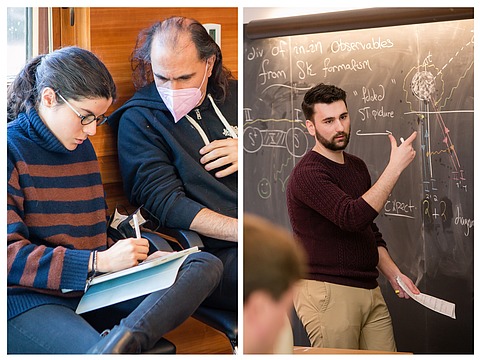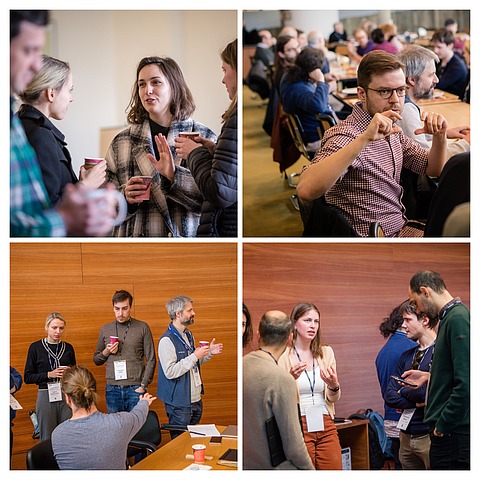
The S-Matrix Marathon at IAS
Where are you running to, electrons?
A two-week “marathon” workshop on S-matrix theory, held from March 11–22 at the Institute for Advanced Study, brought together more than 40 cosmologists, particle theorists, and mathematicians from around the world to discuss future directions in the field.
Scholars in the School of Natural Sciences, Professor Nima Arkani-Hamed and Members Hofie Hannesdottir and Sebastian Mizera, organized the workshop with the aim of tackling decades-old questions about the scattering process of particles that have collided with each other.
One well-known result in particle physics is the discovery of the Higgs particle after experiments at the Large Hadron Collider (LHC) in Geneva. The mathematical tools provided by S-matrix theory bridge the gap between theoretical physics and experiments like this.

The precise result of colliding two particles together at high energies in colliders such as the LHC cannot be determined ahead of time, a fundamental feature of the quantum mechanical universe. Sometimes the particles simply pass through each other. Sometimes they smash into each other and scatter at any number of different angles. Sometimes they can even transform into different kinds of particles.
Theorists working with these observables predict the probabilities of these interactions, specifically the probability amplitudes of outgoing particles given their incoming particles. Physicists attending the workshop are attempting to better understand the mathematics behind this process, especially as experiments become more resource intensive and precise.
One of the great “experiments” in high-energy collisions did not happen in Switzerland, however. It dealt in energies far bigger than those we could recreate on this planet, and it took place at the beginning of time: the Big Bang, where high energy collisions were happening constantly.
This is one of the “experiments” cosmologists attending the workshop are interested in, along with things like measuring galaxies and studying their shapes. Attending the workshop from Cambridge University, cosmologist Enrico Pajer said that by “trading tricks on the theory side,” particle theorists and cosmologists can bring something new to their respective experimental collaborators and theoretical communities.
One of the organizers, Hannesdottir, explains, “At the core of it, it’s analyzing the same physics and that’s why it’s so useful to have this crosstalk between communities, to speed up the process and learn from each other.”

This collaborative approach was precisely the goal of the workshop. The organizers aimed to bring together theorists from around the world, from those working on lattice simulations to phenomenologists. The structure of the “marathon,” with each day devoted to lectures on a specific research topic—such as gravitational physics, dispersion relations, and Schwinger-Keldysh formalism—in tandem with unstructured time, gave scholars a chance to collaborate in both a focused and casual way.
With regard to lunch breaks and teatimes (and even a visit to Albert Einstein’s house!), Pajer said it allowed the group to get more creative: “If you know what you’re going to say, you’re not going to say anything new.”
While there may never be a finish line for S-matrix theory, workshops like this, which collide different theoretical approaches, keep us in the race to understand nature in new ways.
This workshop was sponsored by the Carl P. Feinberg Program in Cross-Disciplinary Innovation.


